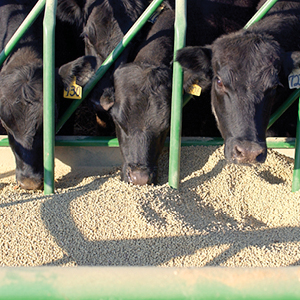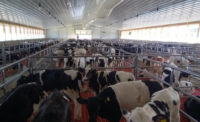
|
If we take the beef industry for example, over the last 15 years informed regulatory oversight and industry implementation of HACCP (Hazard Analysis and Critical Control Points) plans have resulted in greatly improved microbial process control of beef production. As a result, we have observed tremendous reductions in the human incidence of E. coli O157:H7-induced disease. According to the CDC, incidence of E. coli O157:H7 illnesses was 1.0 case per 100,000 people; this incidence achieved the government’s Healthy People 2010 target and represented a 50% reduction over time.
As systems improved, they effectively eliminated a tremendous amount of noise in microbial process control. Two salient consequences of that are (1) additional controls within the slaughter process will have diminishing improvements relative to existing controls (i.e., most of the improvements have already been made*), and (2) it allows us to better understand sources of on-going microbial challenges on which we have made little progress to date — such as Salmonella, which we have learned appears to occasionally be able to evade our typical controls by hiding in lymph nodes.
One way to think about microbial control within slaughter and fabrication is to approach it as a manufacturing process (which effectively it is and many view it as such). Unlike many manufacturing practices, however, we historically have had few tools available to effectively control the microbial quality of the animals presented for harvest.
In many respects, therefore, it is hard to exercise true manufacturing process control when the key characteristic of the raw commodity is unknown or ignored! The good news is that now we are entering an era where efficacious pre-harvest interventions against, say, E. coli O157 in cattle for example, are either available or becoming available. Moreover, these interventions are varied in that some can be added to feed, some use a vaccine platform and some are biological sprays that can be applied just before the animal enters a plant. So ultimately, it will be possible for operations to select an intervention or multiple interventions that best suit their various production characteristics.
None of these pre-harvest approaches are or will ever be a silver bullet — all are somewhat imperfect. They will contribute to a system of controls rather than replace all other controls. A critical concept, however, is that impact (say, public health) is a function of both efficacy and adoption.
In other words, a hypothetical technology that is 100% efficacious (i.e., the “silver bullet”) will have no impact if it sits on the shelf. On the other hand, imperfect technologies or practices can have a tremendous impact if they are broadly adopted.
So the challenge is no longer to simply discover efficacious pre-harvest technologies — they have become available and some companies have products in the development pipeline.
But as I see it, the challenges before us are to remove as many barriers to adoption as possible, and to foster an environment in which producers perceive interventions as efficacious and implementable, and adoption is perceived as advantageous.
*further downstream other highly efficacious tools are available such as non-thermal microbial destruction through irradiation or microwave technologies. In this article, however, I focus on upstream opportunities.


